The Art of (Roofing) Innovation - PODCAST TRANSCRIPT
April 23, 2024 at 12:00 p.m.Editor's note: The following is the transcript of a live interview with Mike Steele from Tremco,. You can read the interview below or listen to the podcast.
Intro: Welcome to Roofing Road Trips, the podcast that takes you on a thrilling journey across the world of roofing. From fascinating interviews with roofing experts to on the road adventures, we'll uncover the stories, innovations and challenges that shape the rooftops over our heads. So fasten your seat belts and join us as we embark on this exciting roofing road trip.
Heidi Ellsworth: Hello and welcome to another Roofing Road Trips from RoofersCoffeeShop. My name is Heidi Ellsworth, and today it's all about innovation. I am so excited. We went to the experts in innovation, Tremco Roofing and my friend Mike Steele, who's in charge of all of the innovation over there. Mike, welcome to the show.
Mike Steele: Thank you, Heidi. I appreciate it. And thank you for having me on your show.
Heidi Ellsworth: I have to tell you, I'm so excited. I love this stuff. I love hearing about how new products come into roofing, how innovation works within the manufacturing process, because there's so much to it. So this is going to be a great, great podcast. But let's start out with an introduction. So, if you could introduce yourself, what you do at Tremco and then we'll go a little bit into the Tremco history.
Mike Steele: Absolutely. Well, thank you, Heidi. So my name is Mike Steele. I'm the Vice President of Product and Technical Solutions. So good way to think about it is I am responsible along with my team for everything product development, product life cycle, including working with contractors on site when there's issues and questions and training.
Every aspect of product my team is responsible for, including the marketing of it, not only to our sales reps, but to outside customers, architects, et cetera. So I've been with Tremco Roofing since 2013. I'm actually a third-generation roofer, first generation sheet metal worker before coming to Tremco and started out as a technical support specialist and worked my way through the organization to where I am today.
Heidi Ellsworth: That is so cool. I love it. Okay, Tremco, I just think the history, what Tremco does in the market today is so interesting and inspirational. So, let's start a little bit about maybe just tell us about Tremco today, who is it, just for those few who don't know and then let's go into a little bit of the history of the company.
Mike Steele: Yeah, absolutely. So Tremco Roofing is really a solutions company. We have approximately 175 sales reps across North America and, I don't know, probably around 900 to 1,000 WTI people, ranging from construction managers all the way to field techs. So, the idea is that we're able to provide our customers with any type of solution for their problem. It's not really about the product. That's why we have so many. We pretty much have every type of out there through all the different roofing categories, including vegetative roofing, safety, et cetera.
So it's really about being able to service our customers, not sell a specific product. Recent years since 2013, we've really gotten back to our roots, and we'll talk about that in a second, but it's really about how do we just help the market not only through providing waterproofing solutions, but also through innovation. And that's really why we're here to talk today.
Heidi Ellsworth: Yeah, that's amazing. And I understand we're in our 96th year. How did Tremco start?
Mike Steele: So, 1928 William C. Treuhaft started Tremco. Well, Tremco, the name, comes from T-R-E, from Treuhaft, M, manufacturing, C-O, company. So that's where the name Tremco comes from. He began as a restoration company. So the actual saying, keeping good roofs good, came from the start of the company.
Heidi Ellsworth: Love it.
Mike Steele: So that really got going with the growth. And it was about 1980 when they were acquired by BF Goodrich, and that was really at the beginning of when they started to transition from being just restoration to more of a built up roofing company. And then after being acquired by BF Goodrich, they brought on modified bitumen roofing, single ply in the '90s, solvent-free products, et cetera, in the '90s as well.
So really started to evolve as a company, not just from restoration of gravel roofs and coatings for smooth roofs, but into actual installation of new roofing systems. Now, what's interesting is going back somewhere in the early times of Tremco Roofing, there was an employee named Frank C. Sullivan and that'll be important in a minute. But then in '97, BF Goodrich sold off Tremco Roofing to RPM.
RPM's founder, Frank C. Sullivan, in 1947 came from Tremco Roofing with the idea of, "I want to have my own company," and the founding product was Alumanation 301, which is still something we sell today. So there was deep ties between the two companies and really kind of a little bit of luck that they came together the way they did, both Cleveland-based or Cleveland area-based companies.
When that happened, it really started to transition a little bit as far as how they spread with different products they sold and WTI came into the fold, et cetera. And then in 2013 is when our current group president came in from RPM and we really started to get back to that, keeping good roofs good. So, 2013 is a changeover of mentality of getting back to core restoration, looking at how do we service our customers better and how do we get back into innovation.
Innovation stalled in the early 2000s with Tremco Roofing, and it's really become the lifeblood of who we are today. I know I shared with you before, we've launched over 60 products since 2013. And in order to do that, you have to have an extreme pipeline of ideas and keep building on it. You can't stop. It's a constant evolution. I mean, at any given point, we probably have 35 to 40 products in the pipeline in varying stages of development and it's probably what makes the job most exciting.
It's one of the best parts of the job. You get to use your creative mind and say, "What problems are in the market that need to be solved and how do we get after it?" So that's been a pivotal point. Like I said, I started in 2010, so I really came on board as this all started, and it's been an exciting journey ever since.
Heidi Ellsworth: That is exciting. I mean, when you're working someplace where innovation is treasured basically, that it is the goal, the basis, it makes every day exciting because you're constantly looking forward and looking at what you can do better. So speaking of innovation process, Tremco has four pillars within your innovation process. I would love to hear about that.
Mike Steele: Absolutely, yeah. So the first and most important is labor efficiency. Labor is not getting any better for any of us on the manufacturing side, on the field side. It's just there's never enough people to satisfy any given project. So the first piece we look at is labor efficiency. If we have an idea for a new product or a new category, if it doesn't meet that metric, we don't move forward. It has to be something that will allow the contractors to save time, even if it's a small amount of time.
It has to be a time saver. It can't be something that's going to take more time to do. So, we look at labor efficiency. If we meet that checkpoint, then the other three all come into place. So the other one is looking at advanced polymer technology. So we try to take what already exists in some cases and say, how do we adapt other technologies or chemistries to this to make it better? A great example would be our POWERply line.
So we have a POWERply Endure membrane line that it came on board about four years ago, and the idea was is how did we adapt new technologies to a rather old market? And these have been around since the 1970s and haven't changed a lot since then. There's been advancements, but it's stalled in the last 15, 20 years. So, we really adapted new technologies to that market space and we're growing there where many companies are shrinking. The next one is looking at unique and superior performance.
So how do we take something that is either deficient in its performance as an existing product or existing category or a new technology that fits into that category to give those unique performance criteria? And then the last one is, and this is the key, is how do we solve a problem that was once thought impossible? That's always the hardest one. It's always to look at, there's a problem that no one else has solved. Why? Why has no one else went into finding a proper solution for this?
And usually we find out very, very quickly, it's really, really difficult to get to a solution for that category. But that doesn't mean we stop. So there are some product launches that have taken five, seven years to get to because it's so difficult to get around, whether it be moisture, whether it be wind uplift situations, whether it be fighter ratings, all those categories to get that real mix between all of them that satisfy the market. That's usually the crux of it all, is how do we solve that impossible problem.
Heidi Ellsworth: And you know what I love, and you mentioned this earlier on with WTI, Weatherproofing Technologies Incorporated, which is a sister company with Tremco. You guys all work together, but you have a direct pipeline to some of those challenges that seem impossible. I mean, you have people in the field every day who are saying, this needs to be fixed. That's a huge advantage.
Mike Steele: I would say maybe a third to half of our pipeline of ideas come from the field, whether it be sales reps, contractors or our WTI field techs. It's great to have people that are thinking every day of, couldn't we make this better? What solutions could we come up with here? What products could solve this for us? So it's great to have that idea pipeline constantly coming in and giving us new ideas of where to move forward.
Heidi Ellsworth: And put it together. When you talk about 60 products, which you just talked about, since 2013, that's incredible. I'd love a little bit of an insight on your team and you and I'm going to say the whole team and how you really maintain that high level of innovation. I mean, that's a lot of work. Let's just put it right there. And it's also a lot of really looking to the future. So how do you inspire your team every day to be at that level?
Mike Steele: Yeah, it's definitely a full-time job. It takes a unique blend of people. Depending on where the idea comes from, it could be something that I'm pushing. It could be something that Paul, our group president, is pushing, et cetera. And it could be something that came from the ground up, from our technical team, product team, that is identifying something as a gap. But regardless of where it comes from, it really takes a conglomerate of different mindsets, the creative mindsets, the technical mindsets, to really look at and say, okay, I hear your great idea, but is it practical?
So then being able to start blending in that practicality to say, all right, ideally this would be awesome, but realistically, we got to be able to meet these metrics, meet this testing, et cetera. So it really takes the entire team. And usually we pick a cross-section of people from product management, technical, R&D, maybe even some of our data people to come in and say, all right, let's examine this from all aspects. How do we put this together as a package and actually make it something that is not only solving a problem, but it's something we can market and sell?
Because that's the other thing, you sometimes get down the road and you're like, well, ideally we wanted this to be $2 a square foot. We're at 27. Where did we go wrong? How do we rein this back in? We put our wish list and there's 100 things. We only need 60 of those things. So there's a lot of work that goes into it to really evaluate not only how do you make a great product, but how do you market it to our customers.
Heidi Ellsworth: Right, and price is important. It has to be realistic within the market for people. That makes so much sense. Well, when you are talking about these teams and people with 60% of their time dedicated to innovation, I mean, that's a lot. That is so awesome. And product development every week. Talk to me a little bit about what you've seen. And you touched on this at the beginning in your introduction and the history, but what have you seen for the growth of the company due to this innovation?
Mike Steele: I could say that starting in 2015, one of our product launches, AlphaGuard BIO, became our fastest growing and one of our most widely accepted by our sales reps, meaning we have the most amount of sales reps selling it, rep adoption. That became our fastest growing product. And it was really derived from another project we were working on, which was AlphaGuard MT. It was a side project as part of that development. And the chemist that created the product really didn't know if he even met the metrics we were looking at.
It was almost like one of those perfect accidents. And it turned out to be a very valuable product. Because then from there, it was a springboard to POWERply Endure BIO Adhesive, AlphaGrade, which are all three very popular products for us. And it's really become a family of products that we're constantly looking at where does this type of technology also lend itself to maybe other markets, et cetera. We're constantly looking at how do we take derivatives of that and adapt it elsewhere.
So yeah, it's definitely something that we take into consideration and understand how do you pull all this together and make it great. Then after that, that still remains one of our highest selling products, but AlphaGrade has really taken off. It was a long time coming. That was a product that took a long time to develop. A lot of challenges to overcome when you're dealing with a gravel restoration. But yeah, it's really picking up and growing very, very fast. We have a lot of growth in our MB line and a lot of the issues that exist or have existed in modified bitumens.
And we found particularly in certain climates, we were able to engineer out of it. And so we're seeing great success there and we look forward to continued growth there.
Heidi Ellsworth: Well, it's interesting. I've been lucky enough to be with you guys and working with you for a number of years now, so I was a part of these launches. I have to say, AlphaGrade kind of really goes back. It's the one that tweaks my mind because it goes back to what you were saying of a challenge, and it also leads to labor savings. It really hits all the pillars.
Because when you have all of these ballasted rock roofs, are you going to take all the time to remove the rock? It's just so labor-intensive. But yet AlphaGrade has been able to create a coatings that goes over that and incorporates a strength of that and really has solved a huge problem. I just want to say kudos on that. I just love that product. I think it's very cool.
Mike Steele: Well, and to build on that, once the loose gravel is vacuumed off, we also created and this is one of those unique situations, we don't do this often, but we created actually installation equipment that can put down AlphaGrade on the roof at about seven to 10 gallons a minute.
So it's able to mix and put that product dispensed in whatever area you need it to from the rooftop and allow the guys to spread it across the roof effortlessly. So it takes a lot of the steps out of it as far as mixing, et cetera, and allows them to dispense directly out of drum. We made that investment for our contractors so that they could save on labor, not only from a standpoint of what the technology of the product is, but the application of it as well.
Heidi Ellsworth: So, it's all parts. It's across. It's in the application. So let's talk a little bit about that, that labor savings driving innovation, because you hit it, we talked about it every day here at the Coffee Shop that we have a labor shortage. We have a shortage of skilled labor coming in. And so I know Tremco does huge amounts with apprenticeships, getting training, helping. But really when the products and the application of those products work together with that, that's innovation that really takes you to the next thing. So talk to us a little bit about that.
Mike Steele: Really understanding what is the problem. So you might look at a situation and there's one situation with five problems. There might be the labor standpoint. So products that are on the market today are really hard to install, take a lot more people on the roof. The idea is how do we take a crew from typically a tear off crew of maybe six down to four? And so it's really about not only how do we save time per man, per person, but how do we save the amount of people you need on the roof as well?
And AlphaGrade is a great example of that. You're not tearing off a roof, so there isn't that tear off crew needing people on the ground, making sure the dumpster is not overflowing, people cutting the roof, et cetera. You're leaving what's in place intact minus getting rid of any wet insulation or damaged plies, et cetera. And then you begin the restoration project process. So you're not having someone dedicated to mixing because you're using the AlphaGrade dispensing equipment.
So now it's taking care of that mixing and applying it to the roof. And now you just have people to move the equipment around, get the drums to the equipment and actually squeeze you out the material. So it's really about, how do you look at all aspects of that project? What are all the challenges, not just one? And how do you incorporate those four pillars into solving that problem? Obviously labor the biggest one. How do we figure that out?
With AlphaGrade, another great example of unique performance, you might be dealing with a roof that's been in place for 20, 30 years. How intact are those plies? We always do core analysis to understand is the tensile strength of the plies still adequate? Are the plies still really adhered? Are we having delamination between plies? So what is the integrity of that roof?
And then by being able to go back over it with AlphaGrade, you might be taking a roof that is questionably going to fail in two, three years and restoring it to a situation where it's now viable for the next 20 plus years. So there's a lot of challenges that come into play and really understanding how do they all work together and how do you come up with that final product for that project, and that challenge is the fun part, right, seeing how many boxes you can check throughout the process.
But the nice thing is then when you take it onto the roof and you actually do your application trials and you get the validation back from the contractors that, yeah, this meets the needs, that's when you know you've hit it, is when the contractors come back and say, "You know what? This does save us time. This is something that we value and something that we look forward to installing versus dreading when we step on the roof the next day."
Heidi Ellsworth: Exactly. And you know what? And that is a big part, I think, of the recruitment of talent to the roofing industry. We've really started making that shift into it doesn't need to be as hard as it was, and it was very, very hard work. It's still hard work, but maybe not very, very. We're starting to make those changes through technology, through innovation that is going to, I think, make more people want to be involved, especially when you have equipment, robotics, all of that kind of stuff. That's enticing.
Mike Steele: It doesn't look like the roofing industry I got into in the '90s, that's for sure.
Heidi Ellsworth: No. This doesn't look like your dad's either.
Mike Steele: No. Definitely not.
Heidi Ellsworth: So, what new product categories has Tremco been involved with? Because I know you're doing a lot more with the building envelope. So what are some of those new categories?
Mike Steele: Yeah, we have products in every category of roofing, including safety, which is roofing adjacent. We develop products in all those categories that are exclusive to Tremco, specific to Tremco that may be developed in-house or could be in conjunction with a partner, in more cases than not, our other RPM companies. And our safety program is a great example of that. Fibergrate is a RPM company that we work with and created exclusive products for rooftop safety that are different than most products on the market because they don't use a lot of metal parts.
It's all fiberglass reinforced plastics that will endure 20 plus years of weathering to provide safety for anyone who has to get up on that rooftop. So we don't shy away from any product category, and we certainly develop in all of them. It's really about where is the needs. Modified bitumen is a great example. If you look at market studies, the MB market is shrinking 1%, 2% a year and we're growing in that category. And so you look at it and say, "Well, why would you invest in a shrinking market?"
It's like, well, there's still a lot of valuable market share there that deserves to have innovation also. You don't just forget about it because it's shrinking. And we hope to turn that trend around and be able to show that there is still a very viable place in the market for belt and suspenders roofing that has been around for 40 plus years.
Heidi Ellsworth: Well, and I was going to say too, I agree with that so much because things change, right? And as we are having this focus on sustainability and the environment and how we're going to do that, modified bitumen is now coming back because of its resiliency and its longevity, and then you add that with the liquid-applied opportunities and how well they work together. It's like, okay, it's something old is new. I love that. Don't forget, because a lot of that technology has served us very well for a long time. It just needs a little bit of upgrading possibly.
Mike Steele: Yeah. There's weather challenges. Certainly different parts of the country have seen extreme weather in the last few years, whether it be heat, you see all the snowfall out in the Western states that they've been enduring this year. There's a lot of weather challenges. And so, looking at products like modified bitumen systems, which typically have two, three and four plies in there of waterproofing, it's very viable and it's going to hold up under those extreme environmental impacts.
How do we just make it more of a 2020 plus product, not a 1984 product? And that's something that we're going to continue to look for, new innovations in that category. Just because we came out with our POWERply Endure Membrane line and our POWERply Endure BIO Adhesive, that doesn't mean we stop there. We continue to look at how do we evolve those products? How do we build in new products in that category to continue to innovate in that market space, not just one and done.
Alphagrade is a great example. Going back to that, we're already working on version two of something that is based off that technology for restoration of gravel roofing, but in a different setup. So there'll be more to come from us in the next year or two years in that category.
Heidi Ellsworth: Well, and that was going to be wrapping up some of our questions. That was one of my questions, looking forward for your innovation, because you said earlier you always have a very big pipeline products that are being tested and they're going there. So I'm curious, after we just mentioned or I mentioned sustainability, we have energy, which is a huge push in all commercial buildings right now, the building envelope that you work very closely with your sister companies, Tremco Sealants, what are some of the trends?
What are some of the outside influences that are really right now top of mind to you, Mike, that are influencing... In order to meet the needs of your customers, what are some of those trends that are influencing future product innovation?
Mike Steele: Yeah, I think right now you're seeing in the market space a big call for building envelope solutions, so tying that roof and wall together under one warranty. The situation that we're in, which is very nice, is we have both divisions that work jointly on roof and wall solutions. And being able to pull together that tie-in between the roof and wall is critical. You can supply a roof system and a wall system, but if your tie-in between those two is not correct, you're going to lose things like energy efficiency.
You're going to lose things like water tightness at those joints. So being able to create them in-house together with our sister company and then test it in our lab to prove out the fact that we have a system that is going to have superior performance in air and moisture infiltration, as well as seismic and other testing to make sure that the products we're taking forward in this building envelope solution meets those needs for the customer and meets the testing criteria and exceeds it.
So it gives us, I believe, a great advantage in that category to give not only the customers what they want, but the architectural community that they're desperately looking for, who can they rely on for trusted performance in this area and know that when they have it inspected and installed on their jobs, it's going to perform as they specified. So that's a key piece for us, is being able to go down those walls and have that connection tight and be able to make sure we're providing our customer exactly what they're looking for.
Heidi Ellsworth: And building envelope performance hits all the marks, energy, solar, water tightness, weather, climate change, all of those different things. This is what our job is in these industries is to protect the people inside and treasures. Okay, Mike, this has been great as always. I just love it. How can contractors get involved? I think there's a lot of contractors out there. I know a number of contractors who work with Tremco and just rave about it. How can they get involved if they're interested?
Mike Steele: Yeah, I think the best way is, first and foremost, reach out to the local sales rep. They're always the first one or the first line of communication to really get involved with your local sales rep. If you're already a Tremco contractor, great. Speak with them. We can get meetings together if you have great ideas you want to share. If you're not already a Tremco sales rep, reach out to the representative that's in your area and get that communication started. We are always looking for great contractors in all areas of North America. So anytime you believe you want to join Team Tremco, reach out.
Heidi Ellsworth: I love it. I love it. And you can find all that information on RoofersCoffeeShop in the Tremco directory. You can find your local reps. You can get to the website. You can hear about all these great innovative products that are coming out and learn more because this can make a huge difference in your business. And I have to say, just from my own experience, working with the folks at Tremco is just a pleasure and a delight. So Mike, thank you so much for your time today and for all this great information. And congratulations on 60 plus products and more to come.
Mike Steele: Yes, thank you very much, Heidi, and I appreciate the time.
Heidi Ellsworth: Thank you. And thank you all for listening. Be sure to check out the Tremco directory on RoofersCoffeeShop.com and also check out all of the podcasts under the RLW navigation. Look for Roofing Road Trips. Also, be sure to subscribe and... Let's try that again. Be sure to subscribe and set your notifications on your favorite podcast channel so you don't miss a single episode of Roofing Road Trips. We'll be seeing you next time.
Outro: If you've enjoyed the ride, don't forget to hit that subscribe button and join us on every roofing adventure. Make sure to visit RoofersCoffeeShop.com to learn more. Thanks for tuning in, and we'll catch you on the next Roofing Road Trip.
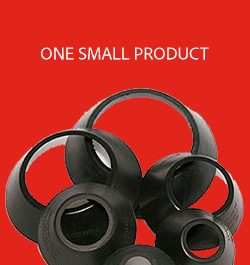













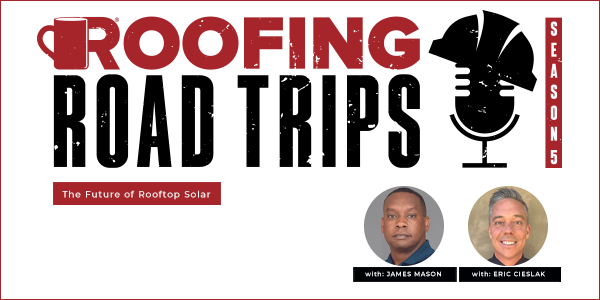
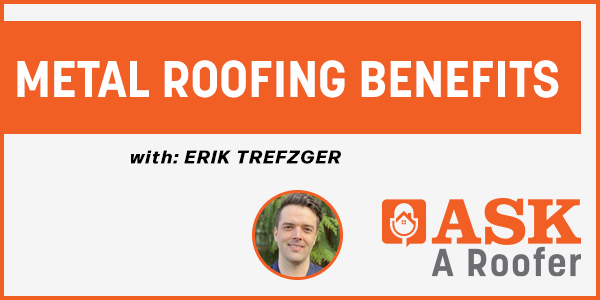
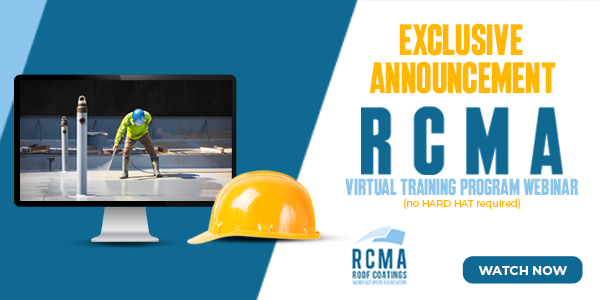



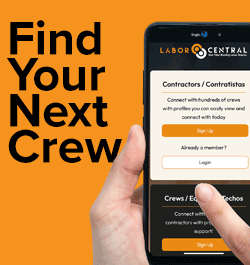


Comments
Leave a Reply
Have an account? Login to leave a comment!
Sign In